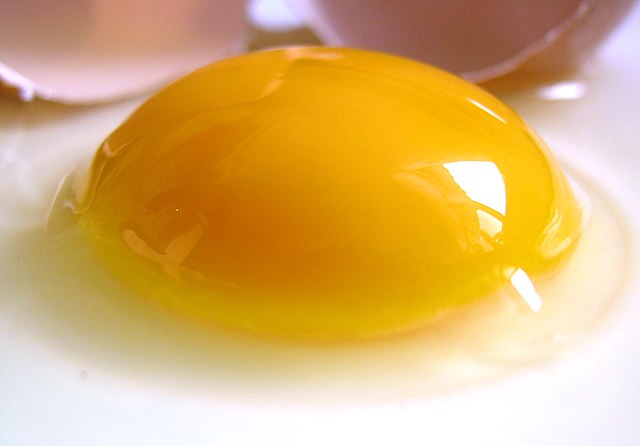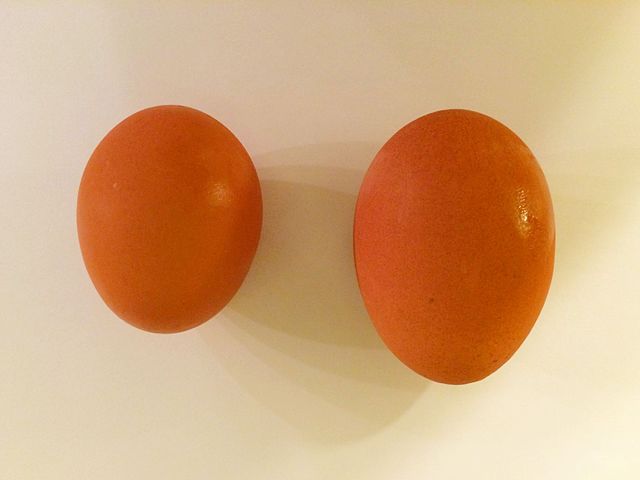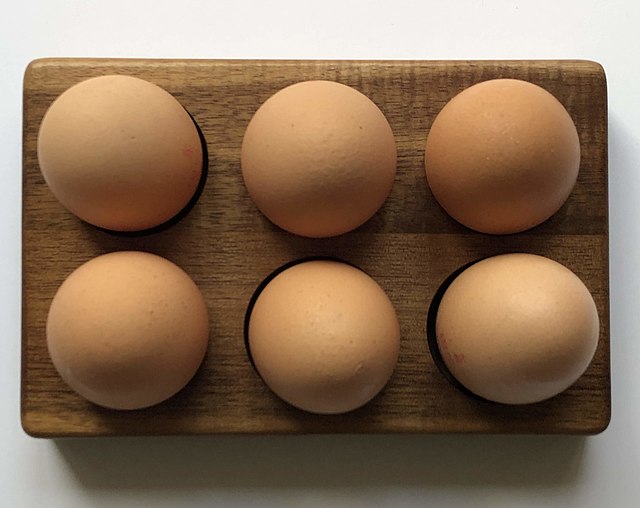Among animals which produce eggs, the yolk is the nutrient-bearing portion of the egg whose primary function is to supply food for the development of the embryo. Some types of egg contain no yolk, for example because they are laid in situations where the food supply is sufficient or because the embryo develops in the parent's body, which supplies the food, usually through a placenta. Reproductive systems in which the mother's body supplies the embryo directly are said to be matrotrophic; those in which the embryo is supplied by yolk are said to be lecithotrophic. In many species, such as all birds, and most reptiles and insects, the yolk takes the form of a special storage organ constructed in the reproductive tract of the mother. In many other animals, especially very small species such as some fish and invertebrates, the yolk material is not in a special organ, but inside the egg cell.
The yolk of a chicken egg
Diagram of a fish egg; the yolk is the area marked 'C'
Comparison of an egg and an egg with a double-yolk (closed)
Comparison of an egg and an egg with a double-yolk (opened)
An egg is an organic vessel grown by an animal to carry a possibly fertilized egg cell and to incubate from it an embryo within the egg until the embryo has become an animal fetus that can survive on its own, at which point the animal hatches.
Eggs of various birds, a reptile, various cartilaginous fish, a cuttlefish and various butterflies and moths. (Click on image for key)
Six commercial eggs — view from the top against a white background
Salmon eggs in different stages of development. In some only a few cells grow on top of the yolk, in the lower right the blood vessels surround the yolk and in the upper left the black eyes are visible.
Diagram of a fish egg: A. vitelline membrane B. chorion C. yolk D. oil globule E. perivitelline space F. embryo







